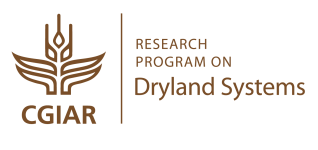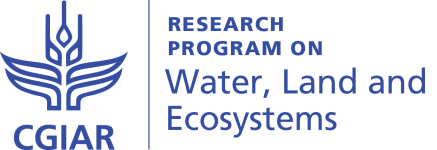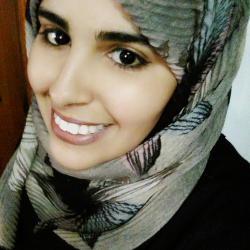Research for Development Projects: Short Guide
Published on: November 6, 2016, Submitted by Fajr Fradi on: October 30, 2016
An introductory, essential guide on the Research for Development (R4D) projects' life cycle as by ICARDA best practices.
The project “Impact Evaluation of Sustainable Land Management (SLM) in Tunisia“ seen through MEL: a model for capacity and institutional development.
Project management is the prime, undeniable challenge of Research for Development (R4D) organisations and institutions. Well-managed projects will ensure the right impact of scientific research and the quality of services delivered by the implementing organizations. For the human capacity employed, software tools that can facilitate the management process represent a much-needed asset, aiding project managers (PMs) and whole research teams in dealing with many tasks ot once, especially those lacking a full managerial background.
Monitoring, Evaluation & Learning (MEL) is one such tool, developed to meet project managment needs and ensure efficacy. It gathers all the components of the project in one comprehensive and user-friendly interface, reduces paperwork and enhances administrative transparency, provides solid support in terms of time and resources management. MEL provides PMs with a closer perspective, assisting them in planning, monitoring and reporting, evaluating their activities efficiently.
Through the advanced M&E lenses of MEL, scanning data on more than 800 research projects and activities, and by meeting partners and PMs to discuss their visions in management, the International Center for Agricultural Research in Dry Areas (ICARDA) has distilled a brief, essential guide aimed at young and aspiring project managers, based on "Impact Evaluation of SLM Options to Achieve Land Degradation Neutrality", one of the 89 projects currently ongoing within MEL and closing its first phase by the end of 2017. Its development and implementation has been linear so far and full of valuable activities, thus representing the perfect basis for this guide and a paragon project to guide aspiring and newly appointed PMs through the apparently convoluted process of project managing (find below related blogs and stay tuned for the upcoming Outcome Story!).
Expert PMs might be tempted to skip these “rookies” heads-up, but that's not all! Even the most seasoned might benefit from a brief update on the latest standards on projects as well as communication, partnership and knowledge sharing advices. Let’s proceed then to illustrate the projects’ main bulks of their life cycle: initiation, implementation and closure.
Initiation: Formulating state-of-the-art ideas
Projects start way before their implementation date. In the first phase, a concept note needs to be developed. It all starts identifying a global, regional or local issue to be tackled and by suggesting possible research solutions. This idea must fit within the strategic goals of the organisation that will receive the concept note.
«The concept note helps to structure preliminary analysis of the relevance, feasibility and sustainability of the future project and to facilitate broader consideration. » (FAO,2012).
Tip: Innovative ideas framed with the Sustainable Development Goals (SGDs) offer greater opportunities for capacity development and will have higher chances to be accepted. Base your ideas on the results and (knowledge) gaps of previous projects, justify the relevance of your solutions and clearly state your points of strength and the benefits you can bring to the subject matter.
When aswering the call for proposals of funding agencies, the concept note must also meet the specific requirements of that call. Funding organisations might have their own specific templates ,listing all the required elements for it to be taken in consideration. The 3 to 5 pages document shall detail a) the idea and its contexts of implementation, b) the assumptions behind the prospected results, c) the risks involved, d) the expected impact and how it will be achieved. This preliminary analysis will give a prior idea about the project design and will constitute an open file for internal review and discussion within the receiving organisation.
Funders only select the most noteworthy of the concept notes and proposals received. If the concept delivered is deemed feasible, the organisation will then ask the proposers to refine it by developing the note into a proper project proposal, being a formal request for financial assistance to implement one or a set of combined activities to realise specific goals.
«The requirements of content and format of proposals differ noticeably from one sponsoring agency to another. While some may provide their own application forms to be filled, and others may request an on-line submission of proposals, others will accept a proposal in any format as long as it features the necessary information, and does not contradict their conditions. » (AUB, 2010).
Tip: Mind the deadlines and plan ahead! Writing a proposal is an extensive process, a major effort not be underestimated. The partners' assistance is a key asset to ensure maximum consideration form the donor: once the proposal is sent, no other versions will be accepted for that call. Make sure to follow the guidelines of the funding organisation while writing the proposal, adopt its template in full and look at the style of the previously accepted proposals, paying attention to recent updates. Consider receiving support from a proposal writing officer.
In the proposal must be detailed a) the research plan of the implementing organisation, b) the main goals and objectives, c) the partnership strategy, d) the research activities, e) the Plan of Work and Budget (PoWB), f) the expected results to be delivered and g) the project management strategy. In general, a proposal shall contain the following sections:
- Summary;
- Project justification (issue to tackle, intervention strategy, impact pathway, monitoring and evaluation - M&E - strategy);
- Target group and area of intervention;
- Research team (composition, roles and positions);
- Detailed budget allocation;
- Detailed work plan.
Shall the proposal be declined, it can be retained and improved for future calls. Else, the implementation phase can start.
Implementation: Ensuring a clear oversight of the project's proceedings
After the proposal has been officially approved, the financial agreement can be signed and relevant contracts can be developed. In particular, the Memorandum of Understanding (MoU) and Memorandum of Agreement (MoA) shall be written and signed by all project partners. Within these documents are defined all of the partners' responsibilities toward the project's implementation, which are preparatory to the development of a clear impact pathway. Differences between MoU and MoA are debated: although the general understanding is that both papers are not legally binding, the Memorandum of Agreement represents a deeper level of commitment from the partners' side, in both financial and programmatic terms, and can override, in part or in full, the MoU.
Another key step is the finalisation of the yearly Plan of Work and Budget (PoWB), previously drafted in the project proposal. The PoWB is a clear and detailed program of all actions to be taken and resources - or actors - deployable, defined to know who does what, when and where, how and why. The schedule is commonly agreed upon in a project inception meeting organised by the implementer organisation. In such meeting, all partners, stakeholders and key resources, such as lead scientists, are invited to discuss the research activities, create a list of expected deliverables, assign capacity and objectify related schedules based on the available funds.
Tip: It is essential to invite donors, government representatives and multi-stakeholders to the inception meeting. Successfully involving those actors in the process will deepen the sense of responsibility and ownership toward the project. This will in turn increase their interest in the results, foster related knowledge sharing and eventually strengthen the impact in the long run and set it on a wider scale.
Signing the MoU, MoA and PoWB will finally set the activities in motion and trigger the Monitoring and Evaluation (M&E) process. It will support, inform and back-up every step of the implementation, by collecting and organising documents, check the deliverables completion, provide statistics, foster knowledge sharing and overall ensure the consistency of the operations within the framework of the impact pathway. Reliable M&E shall also monitor the intellectual property management, assess expenditures and burn rates, evaluate outputs and partnerships. Since these are all vital tasks, it is wise to hire M&E specialists for a backup or to take care of it entirely. The new MEL is designed to enable M&E for non-specialists, safeguarding the efficiency and planned progression of the research project.
Tip: Make sure that M&E duties are taken care regularly and timely by both the management and the research staffs in order to avoid undesirable bottle-necks of data. Keeping the information flowing will ease everybody's work and the M&E won't be felt at all while discreetly building up in the background.
Part three of the project implementation involves reporting accomplished activities and knowledge sharing. It will keep the internal audience updated, the external audience engaged and can be carried out in different ways. Investing in a project open website is a good move, along with producing regular blogs and newsletters, sharing relevant case studies and scientific publications, conducting surveys, interview partners and key-note figures. M&E platforms can ease this process as well, as is the case with MEL and its user-friendly reporting section that includesan open access repository, open view webpages for each project, step-by-step Blog & Outcome Stories module for corporate and research engagement. Reaching the greater public is fundamental to foster involvement, while promoting and successfully engaging in the partnership is primary.
«In March 2017, half way of the "Impact Evaluation of SLM Options to Achieve Land Degradation Neutrality" project, we organized a workshop to introduce our partners the Global Geo-Informatics Options by Context (GeOC) Web GIS, an asset tool entirely developed within the project. We also invited various other stakeholders and actors in the land degradation research environment (government agents, international authorities, researchers, students and farmers). Their valuable feedback and suggestions for potential enhancement have been incorporated in the subsequent development stages. The support provided by MEL has been vital too, providing the reliable evidence on the project's status to partners and donors through its consistent planning and reporting modules. » (Fajr Fradi, ICARDA Junior Project Manager)
Closure: The end... of the first phase!
Closing a project consists of collating and successfully present all the results achieved by the project. The administration of the various partners and donors will need detailed, complete reports on outputs, outcomes and all that is in between. Now is the time to collect: if the M&E strategy worked properly PMs will have no difficulties in disclosing the papers timely and efficiently!
The closing workshop is held to wrap-up and analyse all produced knowledge and achievements, thus presenting the final results to donors, funders, partners and the other stakeholders involved. While the discussion takes into account many aspects, it generally focuses on the challenges overcome during the implementation and the risk management strategies adopted to face them. The people gathered will ultimately produce a chapter on the lessons learned and eventually some best practice, which represent a great success in terms of project management and will contribute to the development of future projects. The closing workshop is also an occasion to further disseminate scientific information, raise awareness on the subject matter and encourage further actions, which might lead to an extension of the project end date.
Tip: The closing workshop is a great opportunity to deliver Outcome Stories and promote the project's vision. The methodologies can be shared with specialists from both same and different contexts, eventually encouraging others in adopting similar approaches. The knowledge shared is this occasion will receive much credit and attention and can positively influence future R4D endeavors. Be sure to provide adequate communication coverage to this main event, be generous with the invitations... and show blasting scientific evidence!
Lastly: project management is an enabling task that, once mastered, can can massively improve the quantity and quality of the research results, in addition to safely lead the planned activities. It includes managing time, money and capacity, therefore, the project leader shall have a realistic view of both limits and possibilities provided by these components and any interaction between them. Proper Monitoring & Evaluation will corroborate this effort, guiding the PMs with accurate information, safeguarding the intellectual property of the research teams and providing insights on potential management risks.
Acknowledgement
This short guide is the result of capacity development (CapDev) activities on project management held by the International Center for Agricultural Research in Dryland Areas (ICARDA) on 26-27 September 2016 in Beirut, Lebanon, and the professional experience acquired through management of the "Impact Evaluation of SLM Options to Achieve Land Degradation Neutrality" project in Tunisia and related "Global Geoinformatics Options by Context" (GeOC) web-GIS, a geoinformatic tool developed to inform and support Sustainable Land Management (SLM) implementations.
The aims of the project are being achieved thanks to the synergic efforts of GIZ, the CGIAR Research Programs on Dryland Systems (CRP-DS), Water, Land and Ecosystems (CRP-WLE), the International Center for Agricultural Research in the Dry Areas (ICARDA), the ICARDA Geoinformatics Unit (GU), Institution de la Recherche et de l’Enseignement Supérieur Agricoles (IRESA), Institut National de Recherches en Génie Rural, Eaux et Forêts (INRGREF), Institut des Régions Arides de Médenine (IRA). The tool is powered by iMMAP, CodeObia, and Amazon Web Services (AWS).
Monitoring, Evaluation & Learning (MEL) has been developed by the International Center for Agricultural Research in Dry Areas (ICARDA) under the framework of the CGIAR Research Program on Dryland Systems (CRP-DS), within an extended capacity development experience including the International Potato Center (CIP), the World Agroforestry Center (ICRAF), Roots, Tubers and Bananas (RTB), Gran Legumes (CRP-GL) and Dryland Cereals (CRP-DC). The online platform is powereb by CodeObia, iMMAP and Amazon Web Services (AWS).







